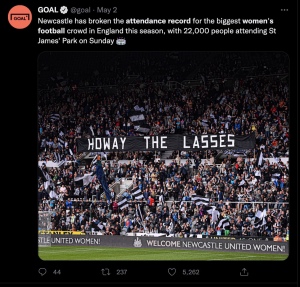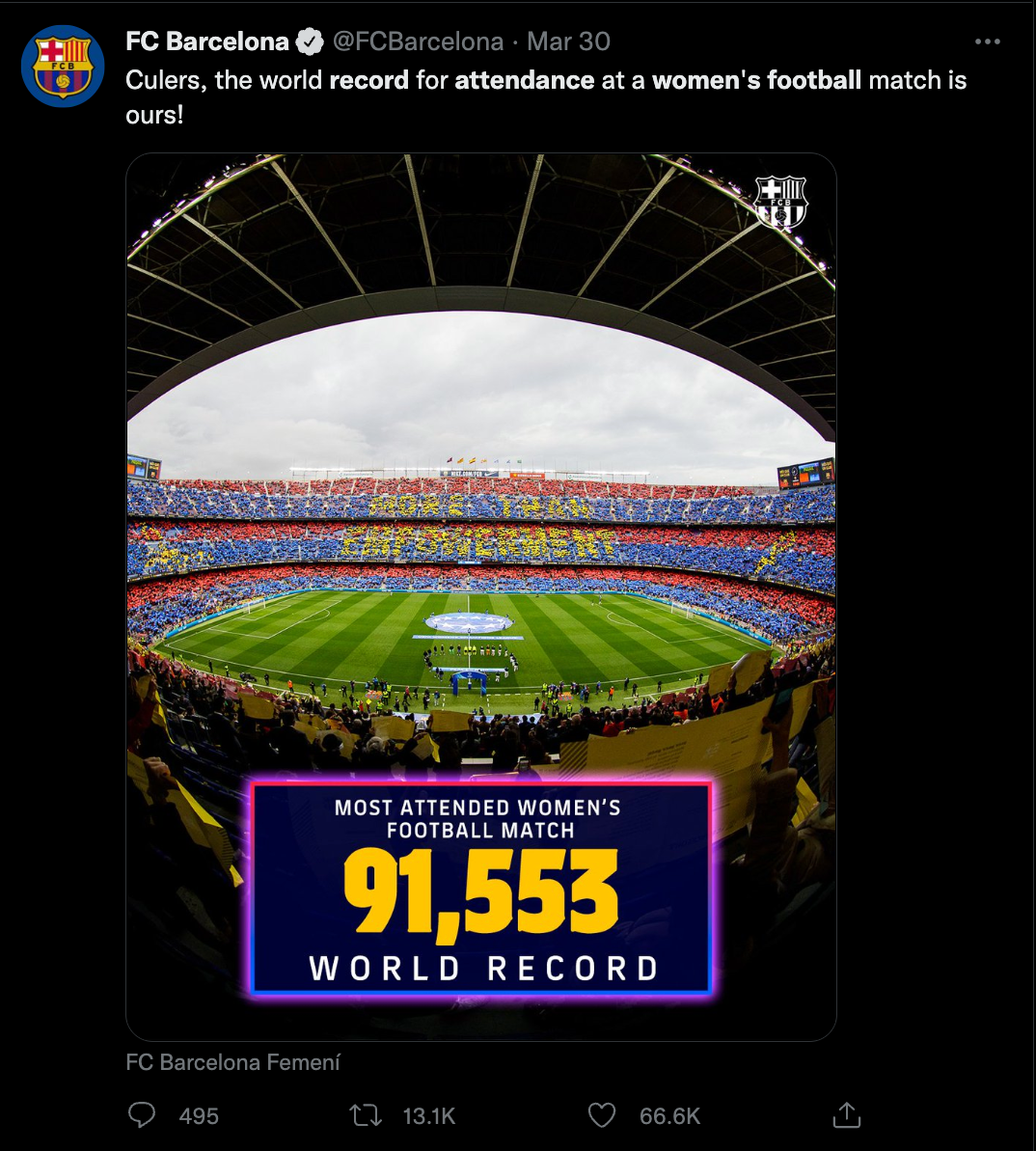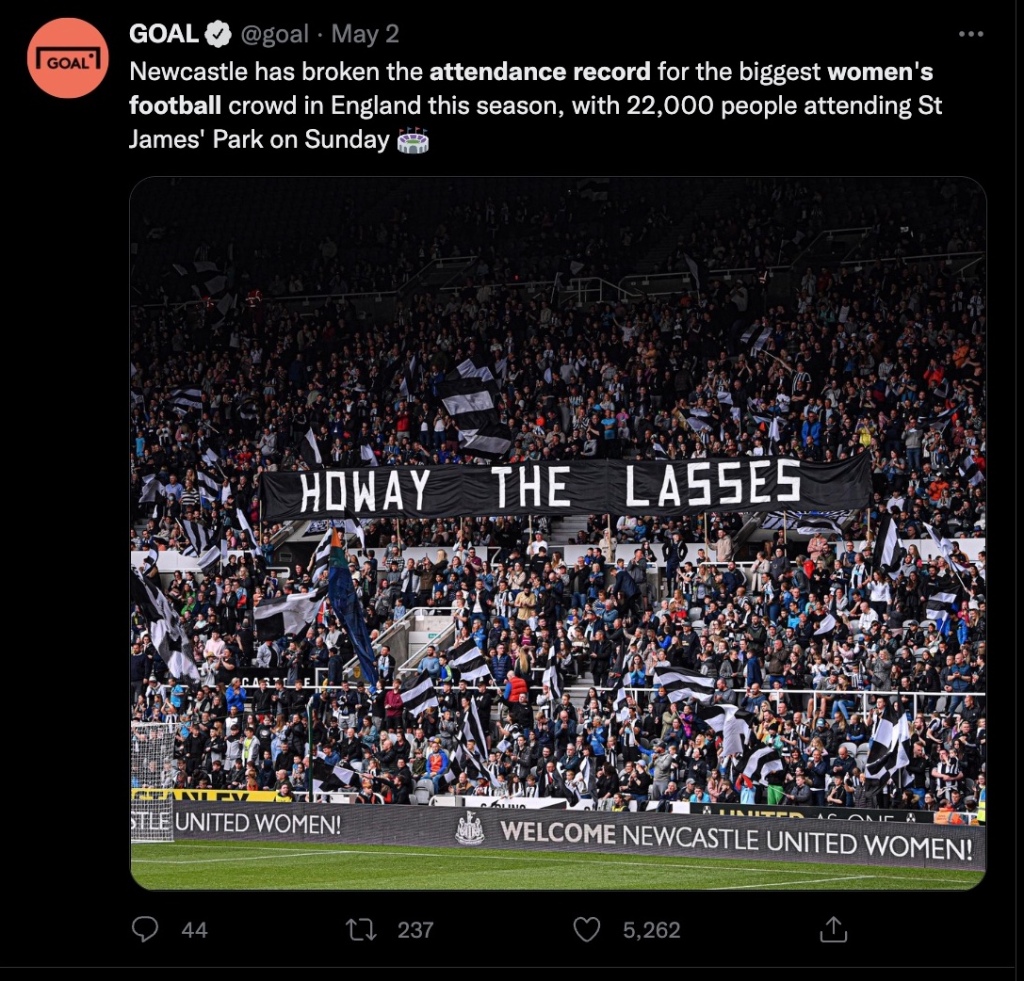
[Revised after the news broke re RFEF demanding Rubiales’s resignation]
When the head of their sport’s federation harasses them, what can national team players do? This is the question hanging over the sports world right now, because it should not take winning the World Cup for players’ grievances to be heard.
Luis Rubiales’s behavior on the biggest stage in women’s football has made all too clear not only the everyday sexism that shapes interactions between men and women in the game: it has made clear the sense of impunity that characterizes leadership in the sport and the gothicism of the architecture which maintains the sport’s patriarchal structure. Consider this: The RFEF (Spain’s federation) is made up of 140 members. 120 of those members are elected (the rest are ex-officio). This body includes the presidents of Spain’s 19 regional federations, elected members from clubs, players, referees and coaches. Of its 140 members, only 6 are women.
Women have never not played football, but women’s access to the game has a long history of suppression. The Franco regime banned women from the sport in late 1930s. Like players in other countries living under these prohibitions (e.g. England, Brazil), women continued to play underground. In the 1970s, a Spanish team played international tournaments although not while wearing the federation badge (learn more about this generation here). The first officially recognized national team in Spain was formed in 1980. There is, in other words, a history of women’s football in Spain and a large community of former athletes whom one might reasonably expect to be represented in the federation’s governance body. If only 6 of the federation’s 140 members are women, it is because after lifting the ban against women playing the game, men have worked for over forty years to maintain exclusive ownership over it. That work is not easy. It is requires constant vigilance.
“Little” kisses like the one imposed on Hermoso are part of that system. We see this in Rubiales’s behavior around that kiss—from his locker room joke presenting an Ibiza trip as a celebration of his marriage with Hermoso, to his dismissal of his critics as idiots, to his attempt to coerce Hermoso into appearing on camera beside him while he downplayed the significants of his behavior, to the federation’s false statement about how she felt, to his attempt to intimidate her by threatening to sue her for defamation, to his attempt to blame her for the kiss because she lifted him off his feet (something he had done to several other players on the podium), to his mention of her missed penalty in his Friday statement, to the framing of the entire crisis as a form of social assassination engineered by false feminists (that phrase is a right-wing dog whistle), to the outrageous statement posted on RFEF’s website casting Hermoso as a liar—you get just a taste of what ordinary women in the sport face when they say, “I didn’t like that.”
The week before the final, Jenni Hermoso was on the cover of MARCA: almost none of the women with discrimination and sexual harassment complaints against their federation officials have this kind of visibility. Yves Jean-Bart was removed from his leadership position in Haiti’s federation after accusations of sexual abuse were made against him by players. (See Laurent Dubois’s July article on this.) Victims and advocates have been fighting to get the case heard in Haiti’s criminal court system while Jean-Bart has used the administrative processes unique to sports to de-legitimize the complaints made against him. FIFA had banned him from football for life: the Court of Arbitration in Sports overturned that ban, and, in June 2023, FIFA lost its appeal of that decision. Jean-Bart is accused of molesting adult and youth players at the national team training camp. He wants to return as the federation’s president: this is one of the most upsetting, most demoralizing situations in soccer—fans of the women’s game would be right to have some kind of feelings about the way this story has been lost in the shadows. Is Spain looking at some version of that story?
Coverage of the Spanish team’s struggle makes frequent mention of the players excluded from the selection. The whole history of that team is populated by stories of this kind of exile—sometimes chosen by the player, and sometimes enacted as a form of retribution. Other teams in the tournament this year also have this shadow bench, including one of the tournament favorites, Colombia. Yoreli Rincón, one of Colombia’s strongest and most experienced players, has not been called up for the national team since 2018. The 29-year old player has been banished for taking a leadership role in spotlighting the injustices that players in that country endure. In a June article for Global Sports Matters, Brenda Elsey wrote about the situation of women working within Colombia’s federation: her essay tracks the way the complaints against abusers disappear into a gauntlet of committees—this is an important read for people who are wondering about the shape of the next chapter in this story.
Soccer’s governance structure is intentionally confusing. The more labyrinthine it is, the easier for those in charge to shirk responsibility. Whenever there’s mention of corruption and sexism in soccer, most people immediately jump to FIFA. However, FIFA is, at its heart, an assembly of sovereign national federations. Those national federations, like the Colombian Football Federation, oversee all aspects of soccer, including amateur and youth divisions, professional leagues, and national teams. Federation leaders oversee ticket sales, development money, hiring, and policy. Men and women players, coaches, and staff operate within the same structure.
To add to the confusion, the men who run different branches of football often hold positions in multiple governance bodies. For example, the president of the Colombian federation, Ramón Jesurún, simultaneously serves on the FIFA Executive Council and holds the position of Vice President and Chair of Finance for CONMEBOL (Confederación Sudamericana de Fútbol), the regional governing body that lies between FIFA and South America’s national federations. When players have a complaint about their treatment by the Colombian federation, they could approach CONMEBOL or FIFA, but Jesurún wields influence in both those spaces. There isn’t a truly independent governance body to help players and staff when they have workplace complaints. (The Colombian Football Federation did not respond to requests for interviews regarding the allegations in this story.)
Officials like Jesurún further neutralize players’ complaints by portraying their relationship with athletes as personal rather than professional. When Jesurún says that he thinks of his national team players as his “daughters and others as my granddaughters,” he is portraying himself as a benevolent patriarch rather than a responsible public official.
Brenda Elsey, “Cafe con mala leche”
Elsey and I discuss this in a recent podcast. I also recommend reading Suzanne Wrack’s overview of one case against Colombia’s U17 coach, Didier Luna, which is part of the story Elsey covers. This is a case of quid-pro-quo harassment, in which a person demands sexual favors as a condition for their employment. According to the complainant in this case, he openly exploited her commitment to the national team in an attempt:
“I was sexually harassed by the manager as soon as I went into the job,” says Carolina Rozo, the former physiotherapist of Colombia Women Under‑17s. “It started with words. He would tell me I was very pretty and then he would try to take advantage of me when we were together at mealtimes and other places. Saying goodbye he would push himself against me very hard and whisper into my ear how much he liked me.
The tipping point for Rozo came in January 2018. “He came to the dining room where we were eating with a photograph of me,” she says. “He pointed at the photograph and said: ‘That’s the woman I want,’ and: ‘Be careful, because if you’re not careful I’ll kiss you.’ So I said to him: ‘Don’t you dare do that, we are just eating.’
That evening, when I was going to my bedroom, he was there, he met me on the way. He said he was being serious about wanting to have something with me, to be ‘his special friend’ and that he could bring me to great things in Colombian football. And then he pointed to the logo of the team on my chest and he said: ‘I want you to give me a piece of your heart.’
Suzanne Wrack, “Carolina Rozo: ‘It started with words. He would say I was very pretty.'”
So, so many people have stories like this. And those victims will tell you that this form of sexual extortion is a key feature in the sport’s toxic ecology.
Personally, I have been worried about where Spain’s story is headed. Today (Aug 28), the national prosecutor invited Hermoso to lodge a complaint against Rubiales. He has already received a number of complaints about the incident, but, according to El Pais, he is reluctant to move forward without her participation. If she files a complaint herself, however, what is it about? The kiss? Or everything Rubiales did afterwards?
How many of the RFEF 134 members who are not women are afraid that we might come for them?! How many of them see this as the kind of harassment for which you shouldn’t be fired? The fact that they have demanded his resignation feels like a miracle, as does the structural change they, after an emergency session, have promised.
It has been in Rubiales’s interest to turn this story into a question of consent. Every harassment victim, and especially women, enter into these scenes suffering from a credibility deficit. Within rape culture, the truth of an accusation will be turned into a mist. The common sense of rape culture is that the truth of sexual assault cannot be known, and/or that the man’s intentions were innocent. This is what Eve Sedgwick described as “the privilege of unknowing.”
The epistemological asymmetry of the laws that govern rape […] privilege at the same time men and ignorance, inasmuch as it matters not at all what the raped woman perceives or wants just so long as the man raping her can claim not to have noticed (ignorance in which male sexuality receives careful education).
Eve Kosofsky Sedgwick, Epistemology of the Closet
In general, criminal courts do not offer the kind of justice people are demanding when they declare “se acabó.” The criminal court system requires an isolated criminal event and a single perpetrator who can be punished. So much more is at stake with this struggle. Rubiales weaponized the federation against a player because she said she didn’t like the kiss gave her. That federation is not a machine: it is a large group of people. Even if the RFEF or EUFA or FIFA had excellent policy regarding accusations of sexual harassment and discrimination (and by all accounts, they don’t), that policy is only as good as the people who are charged with enforcing it. In a system that is this dominated by men and that is also this rife with corruption, you would have to be very naive to think that something like justice was right around the corner.
FIFA issued a 90-suspension against Rubiales, prohibiting him from working in football. They also issued a remarkable-for-them no contact order, prohibiting him from contacting Hermoso, her family, and her team. This is the first thing any organization around this fiasco has gotten right. When your institution gets wind of bullying, harassing behavior your first obligation is to do whatever you can to stop that bullying, abuse, and/or harassment. That they issued this no-contact order shows that they understand the problem is not about whether or not that kiss was consensual: they understand that Hermoso, her circle, and the whole team are being subjected to harassment. FIFA in issuing that no-contact order behaved as if his behavior was dangerous, and they were right to do so. Rubiales used his position to paint a target on Hermoso’s back. But how that order is enforced is a not obvious!
Under Rubiales, the Spanish federation asked UEFA to ban it—UEFA and FIFA both have rules that punish federations where they are manipulated by their national governments. This is a very hollow set of regulations unevenly applied, but that is a story for another day. In this case, RFEF tried to position the various investigations and explorations of disciplinary action mobilized this week as governmental interference. This is widely accepted as a last-ditch effort on the part of the federation to save Rubiales. Thankfully UEFA said no.
FIFA, UEFA, and the Spanish criminal court system will not set things right. That work falls squarely on the shoulders of players and their union, FUTPRO. In a statement made today, the union president Amanda Gutiérrez was explicit: “Measures must be taken so that we can improve the working conditions for our soccer players so that they are not subject to discrimination and we can put an end to the problems that we have been having for so many years.” This will require “structural change.” The union positions what happened to Hermoso in perspective—complaints filed against the manager of Alhama, a club in Spain’s top league, led to an investigation which found that 68% of the club had experienced harassment and yet “the club has done absolutely nothing.” (For more, read this.)
With the federation’s call for Rubiales’s resignation, they show that they are, for the moment, following the players’ lead. Too much is on the line: Spain has been aiming to host the men’s World Cup in 2030, and to do that, now, thanks to the women who play in Spain, the federation will have to clean house.
Meanwhile, Rubiales’s mother has retreated into a church where she is threatening a hunger strike. A bizarre reminder if ever we needed one that women also buy into the patriarchy’s empty promises, and this rarely serves them well.








